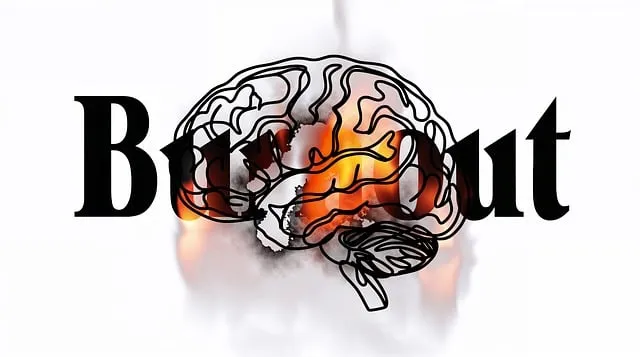In today's digital age, mental wellness is a growing priority, driving demand for accessible, personalized support, particularly in remote areas like Castle Rock. The Castle Rock Kaiser Permanente mental health facility leads the way with its innovative app, offering tools for mood management, cognitive-behavioral therapy, and crisis intervention. A successful mental wellness app should provide tailored therapy sessions, mood tracking, mindfulness exercises, community forums, and peer support, integrating advanced technologies such as NLP and machine learning to adapt to individual needs. Strategic marketing targeting specialized services is key to reaching users in need, while future trends include AI interventions, virtual reality therapy, and integration with wearable devices.
Mental wellness apps have emerged as a crucial tool in addressing growing concerns about mental health. With the success of pioneering facilities like the Castle Rock Kaiser Permanente mental health facility, the demand for accessible and personalized digital solutions is more pronounced than ever. This article explores the development of such apps, highlighting key features, technologies, marketing strategies, and future trends, all informed by best practices from leading institutions like Castle Rock Kaiser Permanente.
- Understanding the Need for Mental Wellness Apps
- The Castle Rock Kaiser Permanente Model: A Leading Example
- Key Features of an Effective Mental Health App
- Development Process and Technologies Involved
- Marketing, User Engagement, and Future Trends
Understanding the Need for Mental Wellness Apps

In today’s fast-paced world, mental wellness has emerged as a paramount concern for individuals across various demographics. Facilities like Castle Rock Kaiser Permanente mental health facility highlight the growing need for accessible and personalized support. Mental health challenges are increasingly recognized as common yet treatable, pushing the development of innovative solutions such as mobile applications. These apps cater to a wide range of users, offering tools tailored to coping Skills Development, Conflict Resolution Techniques, and Self-Care Practices.
The demand for digital mental health resources is driven by several factors. Growing awareness about mental wellness, increased accessibility to technology, and the desire for discreet support have all contributed to this trend. Apps provide a convenient and often cost-effective alternative to traditional therapy, enabling users to manage their well-being at their own pace and convenience. By leveraging technology, these applications have the potential to reach a broader audience and significantly impact overall mental health outcomes.
The Castle Rock Kaiser Permanente Model: A Leading Example

The Castle Rock Kaiser Permanente mental health facility stands as a beacon of innovative care, showcasing an exceptional model for mental wellness app development. This leading-edge approach emphasizes a holistic strategy, integrating technology with traditional therapy methods to enhance patient outcomes. By prioritizing Inner Strength Development, the facility aims to empower individuals to manage their moods effectively and navigate life’s challenges.
The app, tailored by Castle Rock Kaiser Permanente, goes beyond mere symptom tracking. It offers a comprehensive suite of tools for Mood Management, including mindfulness exercises, cognitive-behavioral therapy techniques, and personalized coaching. Moreover, Risk Management Planning for Mental Health Professionals is a critical aspect, ensuring that both patients and practitioners have access to immediate support and crisis intervention features. This integrated system exemplifies how technology can augment traditional mental health services, paving the way for more accessible and effective care.
Key Features of an Effective Mental Health App

An effective mental health app should offer a comprehensive suite of features tailored to support users’ emotional well-being. Key components include personalized therapy sessions, accessible through video conferencing or text chat, enabling individuals to connect with professionals from the comfort of their homes—a feature particularly valuable for those who may face barriers in accessing traditional therapy, such as those at remote locations like Castle Rock, where Kaiser Permanente mental health facilities are nestled.
Additionally, these apps should incorporate tools for tracking moods and symptoms, promoting self-care practices through mindfulness exercises, meditation sessions, and cognitive behavioral therapy (CBT) techniques. Features facilitating connections with supportive communities can significantly enhance user experiences. This could involve forums, peer support groups, or community outreach program implementations, mirroring the positive impacts of Public Awareness Campaigns Development. By integrating these elements, mental health apps have the potential to revolutionize access to care and foster a culture of open discussion around mental wellness.
Development Process and Technologies Involved

The development process of a mental wellness app involves careful planning and a multifaceted approach to ensure it meets the needs of users like those accessing services at Castle Rock Kaiser Permanente mental health facility. It begins with defining the app’s purpose, understanding the target audience, and identifying specific features that promote positive thinking and improve mental wellness. This stage includes market research and competitive analysis to differentiate the app and offer unique value.
Technologies play a pivotal role in modern app development. For mental wellness apps, these might include cloud-based platforms for data storage and user privacy, natural language processing (NLP) for personalized interactions, and machine learning algorithms that adapt to individual users’ needs over time. Integrating features like self-care routine development tools, meditation guides, and mental wellness coaching programs requires expertise in software engineering and design thinking. These technologies combine to create an engaging, intuitive, and effective digital experience for enhancing mental health.
Marketing, User Engagement, and Future Trends

Marketing strategies for mental wellness apps should focus on reaching a broad audience, especially those who might benefit from specialized services like those offered at the Castle Rock Kaiser Permanente mental health facility. Targeted digital campaigns, leveraging social media platforms, can effectively raise awareness about app benefits and encourage downloads. User engagement is key to the success of any mental health app; incorporating interactive features, gamification elements, and personalized content tailored to individual user needs can enhance long-term adherence.
Future trends in this space suggest a growing emphasis on AI-driven interventions, virtual reality therapy, and integration with wearable devices for continuous stress management. Apps that offer not just anxiety relief but comprehensive mental wellness solutions, including social skills training, stand to gain significant traction. By staying at the forefront of these innovations, developers can cater to evolving user demands and contribute to a more accessible and effective mental health support ecosystem.
Mental wellness apps have emerged as a powerful tool in addressing the growing need for accessible and personalized mental healthcare. As evidenced by the success of facilities like the Castle Rock Kaiser Permanente mental health center, integrating digital solutions can significantly improve patient outcomes. By focusing on key features such as evidence-based therapies, user-friendly interfaces, and secure data management, developers can create apps that make a real difference. The development process involves a blend of cutting-edge technologies, ensuring privacy and efficacy. Moving forward, effective marketing strategies, coupled with insights from user engagement, will be vital to shaping the future of mental wellness apps and making them accessible to even more individuals in need.


